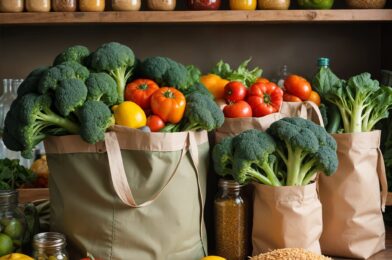In an era where environmental consciousness is paramount, the concept of sustainable travel has gained significant traction. As wanderlust-driven individuals, we’re increasingly aware of the impact our adventures have on the planet and local communities. Sustainable travel, also known as eco-tourism or responsible tourism, offers a way to satisfy our exploration cravings while minimizing negative effects on the destinations we visit. This approach to travel isn’t about sacrificing comfort or experiences; rather, it’s about making mindful choices that benefit both travelers and hosts. From reducing carbon footprints to supporting local economies, sustainable travel encompasses a wide range of practices that can enhance our journeys and preserve the beauty of our world for future generations. In this article, we’ll delve into the principles of sustainable travel and provide practical tips on how to explore the world responsibly.
One of the fundamental aspects of sustainable travel is transportation. As air travel contributes significantly to carbon emissions, consider alternatives when possible. For shorter distances, opt for trains or buses, which generally have a lower environmental impact. If flying is necessary, choose direct flights to reduce emissions from multiple takeoffs and landings. Many airlines now offer carbon offset programs, allowing passengers to invest in projects that reduce greenhouse gases equivalent to their flight’s emissions. When at your destination, embrace public transportation, walking, or cycling to explore. Not only do these options reduce your carbon footprint, but they also offer a more immersive experience of the local culture and environment. For longer stays, consider renting an electric or hybrid vehicle if public transport isn’t feasible. By making conscious choices about how we move from place to place, we can significantly reduce the environmental impact of our travels.
Accommodation plays a crucial role in sustainable travel. Look for hotels and lodgings that have strong environmental policies and practices. Many establishments now boast eco-certifications, indicating their commitment to sustainability. These might include features like energy-efficient lighting, water conservation measures, and waste reduction programs. Consider staying in locally-owned guesthouses or eco-lodges, which often have a smaller environmental footprint and contribute more directly to the local economy. For a truly immersive experience, try homestays or farm stays, where you can learn about local lifestyles and sustainable practices firsthand. When booking accommodations, inquire about their sustainability initiatives and choose options that align with your values. During your stay, practice energy-saving habits like turning off lights and air conditioning when not in use, reusing towels, and avoiding single-use plastics. These small actions, when multiplied across millions of travelers, can have a significant positive impact.
Responsible consumption is another key aspect of sustainable travel. Support local businesses and artisans by purchasing locally-made souvenirs and handicrafts. This not only provides a more authentic memento of your trip but also contributes to the local economy and helps preserve traditional crafts. When dining, opt for restaurants that source ingredients locally and sustainably. Try local specialties and seasonal dishes, which often have a lower environmental impact than imported foods. Be mindful of your water consumption, especially in areas where water scarcity is an issue. Carry a reusable water bottle and use water purification methods instead of buying bottled water. When it comes to wildlife experiences, choose ethical operators that prioritize animal welfare and conservation. Avoid attractions that exploit animals for entertainment, such as elephant rides or tiger petting zoos. By making conscious choices about what we consume and support during our travels, we can ensure that our presence benefits rather than harms the destinations we visit.
Cultural respect and engagement are integral to sustainable travel. Take time to learn about the local customs, traditions, and etiquette of your destination before you arrive. This knowledge will help you navigate social situations respectfully and avoid unintentional offense. Dress appropriately, especially when visiting religious or cultural sites. Learn a few basic phrases in the local language – even simple greetings can go a long way in building goodwill. Seek out authentic cultural experiences that provide meaningful interactions with local people, rather than superficial tourist traps. Consider participating in community-based tourism initiatives, where local communities directly benefit from and control tourism activities. When taking photographs, always ask for permission, especially when photographing people. Remember that you’re a guest in someone else’s home – approach your interactions with humility, openness, and a willingness to learn. By showing respect and genuine interest in local cultures, we can foster positive cross-cultural understanding and ensure that tourism benefits host communities.
Environmental conservation should be at the forefront of any sustainable traveler’s mind. Many destinations offer opportunities to participate in conservation efforts, from beach clean-ups to reforestation projects. Even if you don’t join organized activities, practice the “Leave No Trace” principles: take only photos, leave only footprints. Be mindful of your impact on natural environments, staying on designated trails and respecting wildlife. Avoid purchasing products made from endangered species or fragile ecosystems, such as coral jewelry or hardwood souvenirs. In marine environments, use reef-safe sunscreen to protect delicate coral ecosystems. Consider timing your visits to avoid peak seasons, which can strain local resources and ecosystems. By being conscious of our environmental impact and actively participating in conservation efforts, we can help preserve the natural beauty that draws us to travel in the first place.
Technology can be a powerful tool for sustainable travel. Use apps and websites that promote sustainable tourism options, from eco-friendly accommodations to responsible tour operators. Digital guidebooks and maps can reduce the need for printed materials. Social media and travel blogs can be platforms for sharing sustainable travel experiences and inspiring others to make responsible choices. However, be mindful of “over-tourism” – avoid geotagging specific locations of fragile or lesser-known sites that could be negatively impacted by sudden influxes of visitors. Use technology to research and support local initiatives and businesses that align with sustainable principles. Some apps even allow you to track and offset your carbon emissions from various travel activities. While embracing technology, remember to disconnect occasionally and fully immerse yourself in your surroundings – after all, connecting with new places and cultures is at the heart of why we travel.
Sustainable travel is not just about individual actions; it’s about being part of a larger movement towards responsible tourism. Share your experiences and lessons learned with fellow travelers. Provide feedback to businesses and destinations about their sustainability practices – positive reinforcement can encourage further improvements, while constructive criticism can highlight areas for growth. Consider supporting or volunteering with organizations that promote sustainable tourism development. When you return home, reflect on your experiences and how they’ve shaped your perspective on travel and global issues. Let your journey inspire lasting changes in your daily life, from more sustainable consumption habits to increased engagement with global environmental and social issues. By approaching travel as an opportunity for personal growth and positive impact, we can ensure that our explorations enrich both our lives and the world around us. Sustainable travel is not just a trend – it’s a necessary evolution in how we explore and interact with our planet, ensuring that the joy of discovery can be shared by generations to come.






